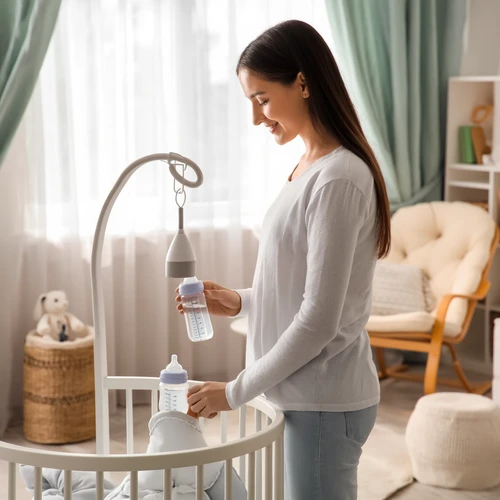Why Bottle Warmers Matter
Warming bottles to the right temperature is crucial for infant nutrition and safety. Cold milk can cause stomach discomfort, while overheated milk may scald a baby’s delicate mouth. A reliable bottle warmer helps maintain the perfect balance, ensuring your little one gets the best possible feeding experience.
Types of Bottle Warmers
There are four main categories of bottle warmers that parents commonly consider:
1. Portable Stand‑Alone Warmers – Ideal for on‑the‑go parents, these plug‑in devices fit in the crib or car seat. They often hold multiple bottles and have built‑in timers.
2. Countertop Steamers – These small, sleek models use a steam‑based system to gently warm milk. They are usually lighter and offer precise temperature control.
3. Bottle Warmer In‑Line Add‑Ons – Designed for use with a bottle feeding system, these warmers attach directly to the feeding tube, keeping milk at a steady temperature during the entire feed.
4. Multifunctional Baby Care Units – Some larger units combine bottle warming, sterilization, and even bottle drying, making them a one‑stop solution for busy parents.
Safety Features to Look For
All reputable bottle warmers should come with these safety safeguards:
• Automatic shut‑off after the set time expires to prevent overheating.
• Temperature sensors that maintain a constant 37–40°C (98–104°F).
• Removable, dishwasher‑safe parts for easy cleaning.
Before purchasing, verify that the device meets your local safety standards and has positive consumer reviews focusing on reliability and ease of use.
Choosing the Right Warmener for Your Lifestyle
Consider the following when deciding:
• Portability – If you travel often, a lightweight, battery‑operated model is best.
• Volume – For families with multiple infants, a warmer that holds up to 3–4 bottles is efficient.
• Noise level – Quiet models won’t disturb nighttime feeds or sleeping infants.
Matching your device to your daily routine can save time and reduce stress during feeding periods.
Maintaining and Caring for Your Bottle Warmer
Regular cleaning is essential to prevent bacterial growth. Use warm, soapy water or a mild disinfectant for the internal chamber, and rinse thoroughly. After each cleaning session, let the warmer air dry completely before using it again. Keeping the device in a dry, cool place when not in use will extend its lifespan.
Expert Tips for Baby Care
1. Pre‑warm in advance. Place the bottle in the warmer about 15 minutes before feeding to avoid delaying the meal.
2. Check the temperature. Test the milk on the inside of your wrist – it should feel warm, not hot.
3. Never leave the warmer unattended. If your baby falls asleep during feeding, gently pause the warmer and resume once awake.
Adopting a few of these small habits can turn feeding time into a calm, pleasurable routine for both parent and child.
In conclusion, a good bottle warmer not only ensures your baby’s comfort but also reduces the risk of over‑or under‑heated feeds. By selecting a device that aligns with your lifestyle and paying attention to safety and maintenance, you’ll create a healthier, more efficient feeding environment for your little one.


